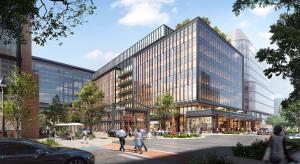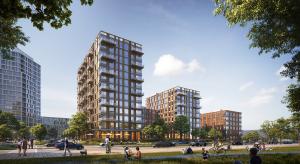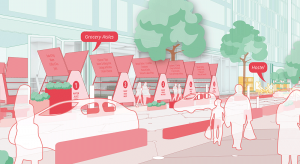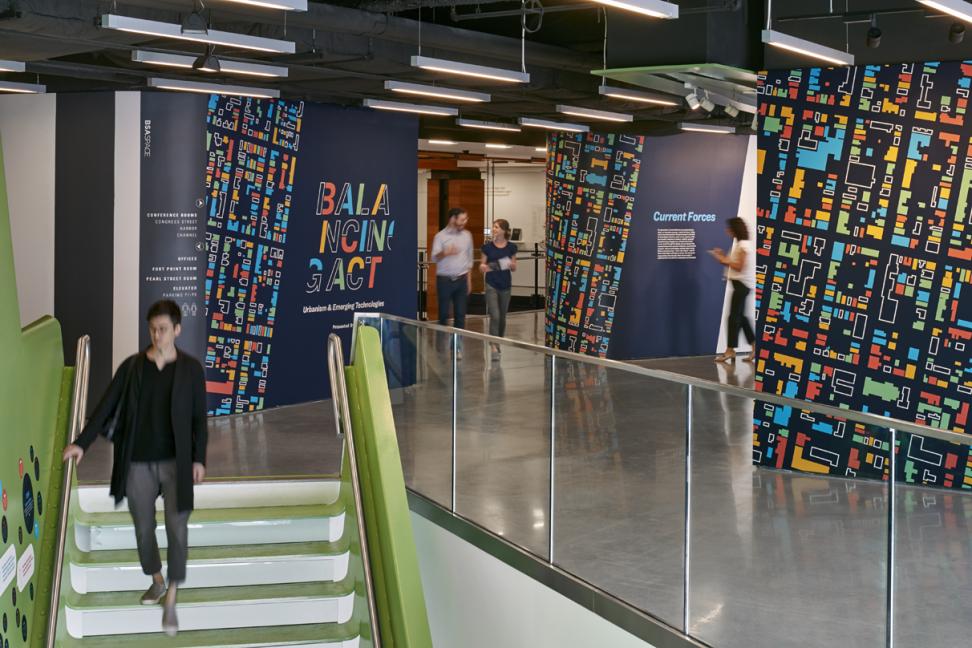
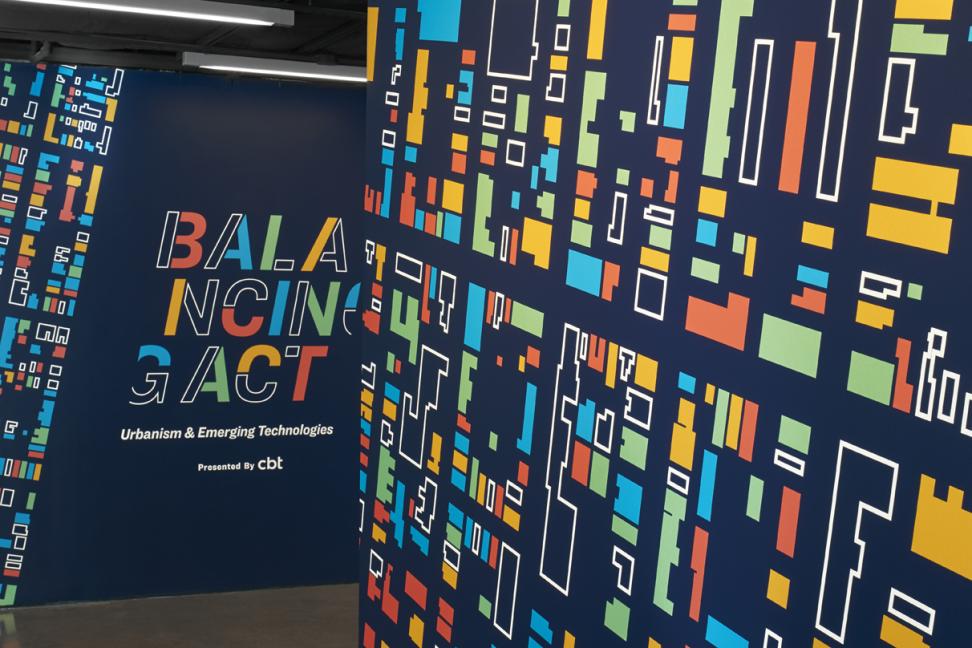
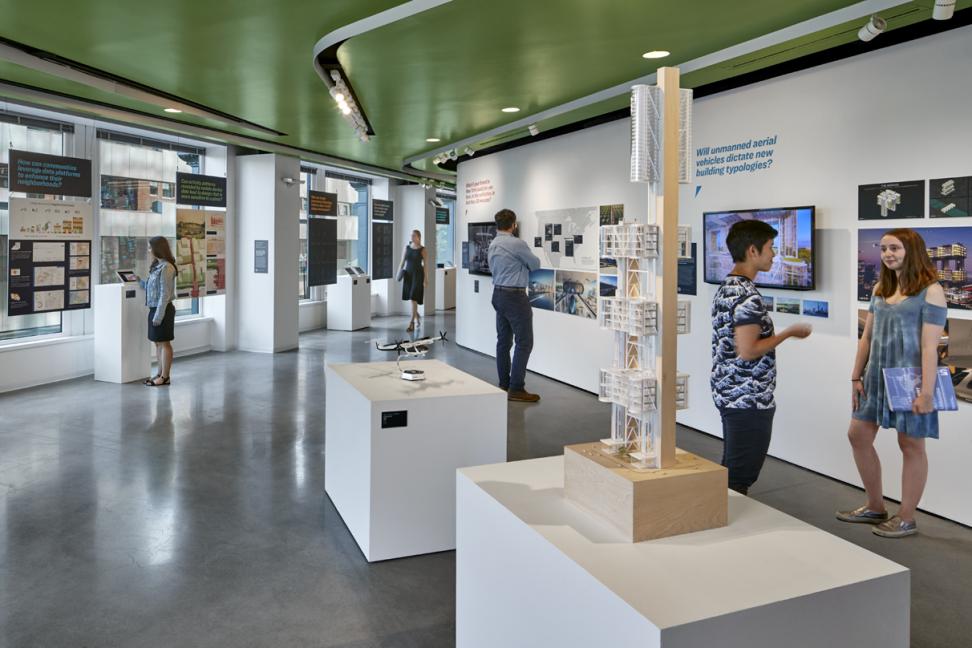
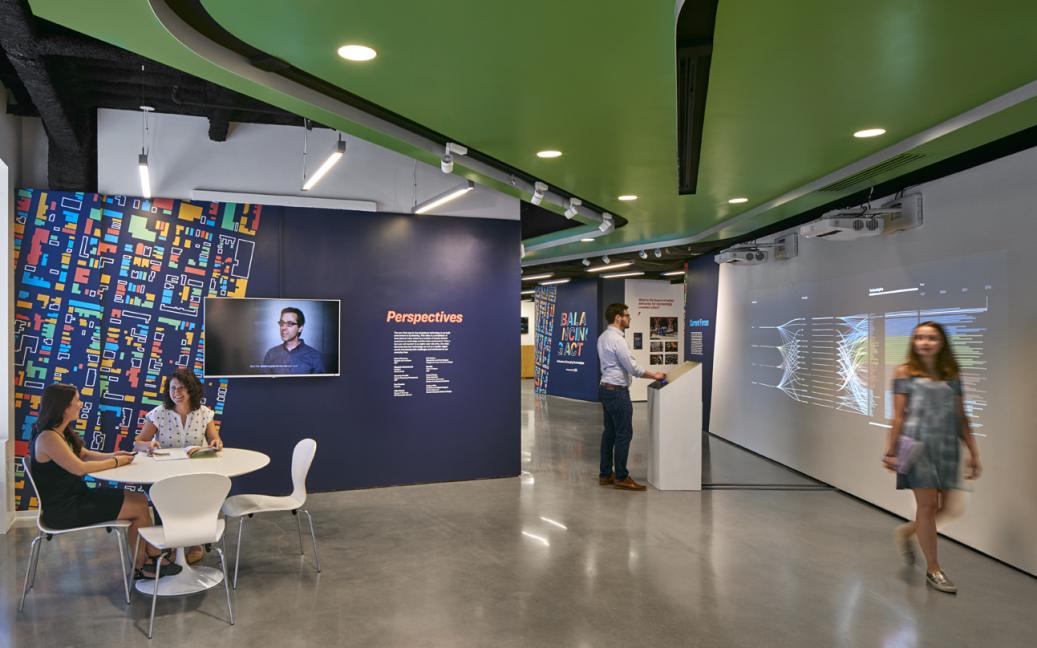
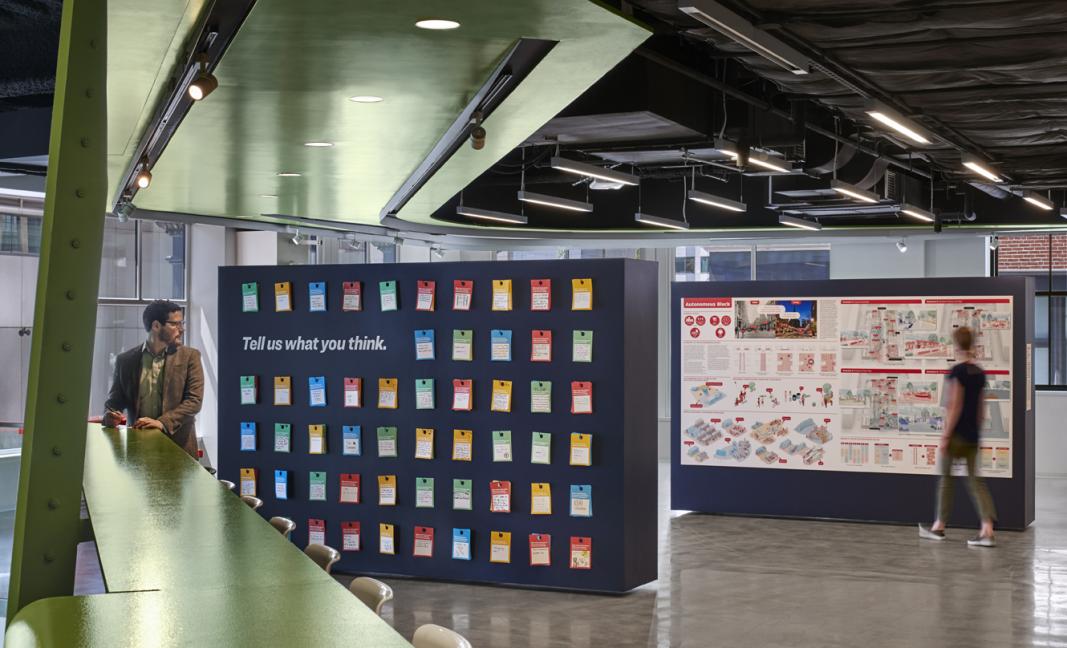
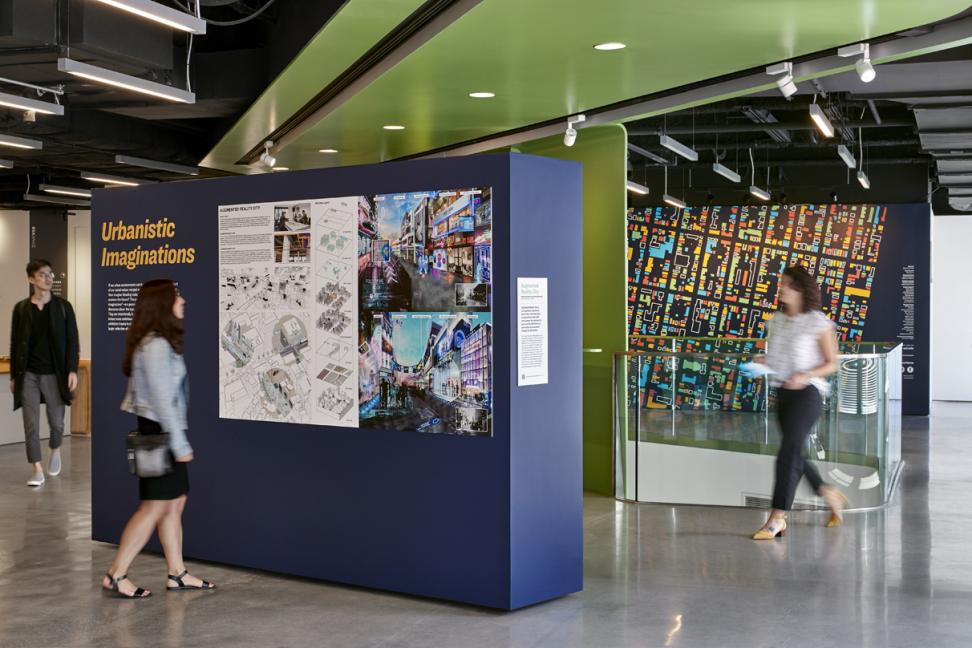
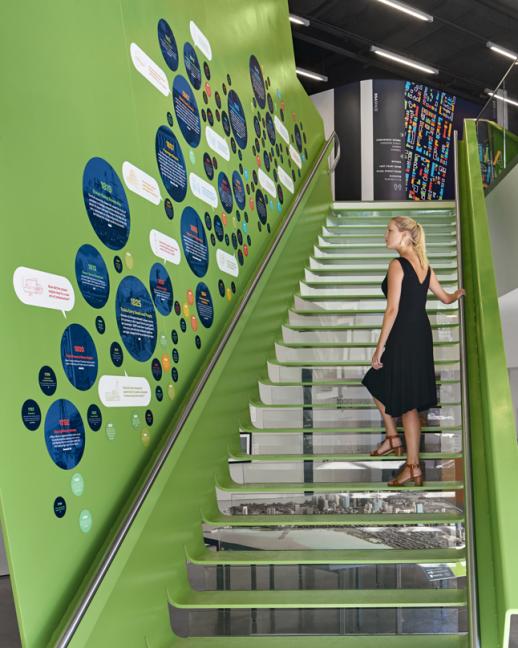
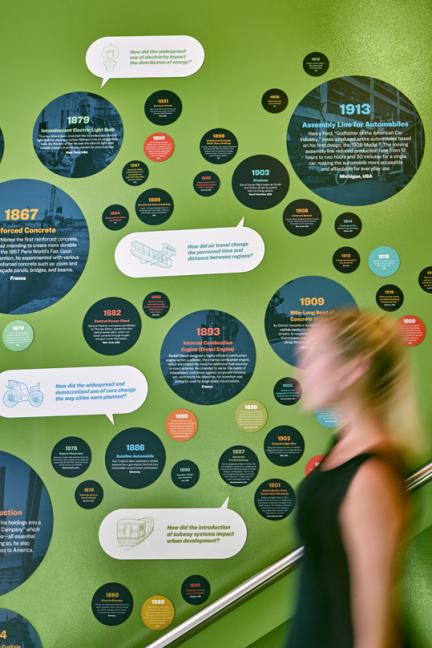
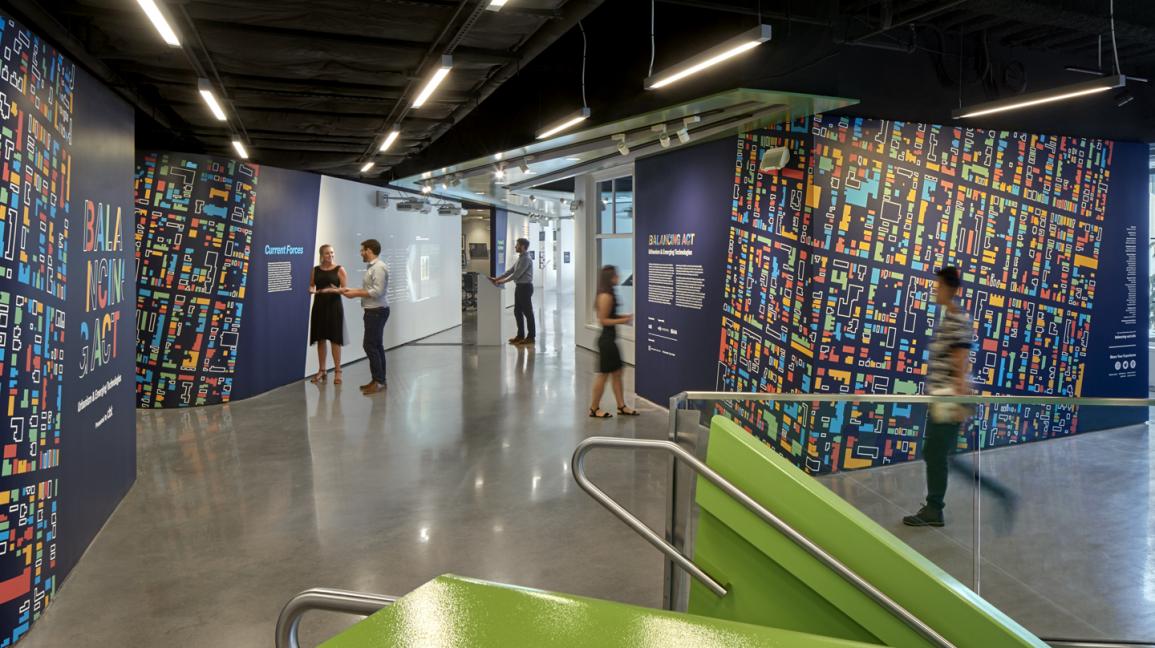
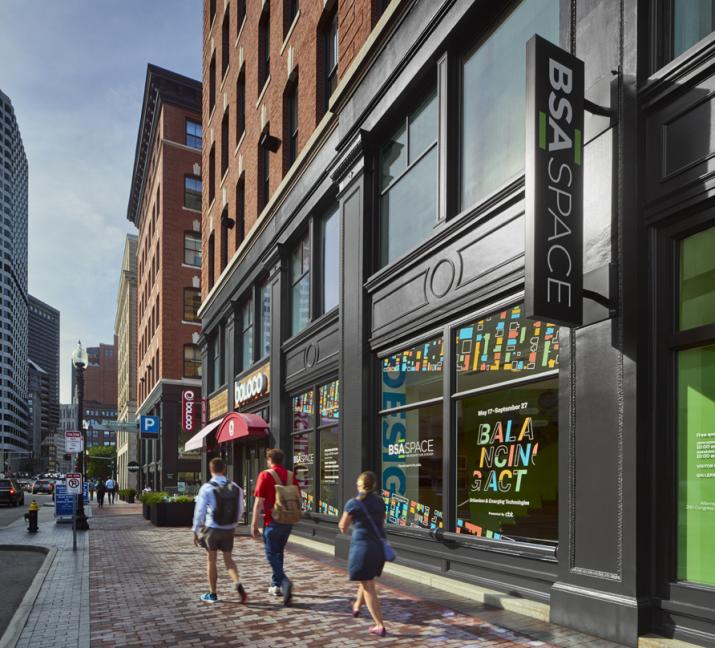
Balancing Act
- Practice Area
- Urban Design Cultural
- Type
- Architecture Learning Environments Public Spaces Graphic Design Environmental Graphics Tactical Urbanism Innovation/Technology
- Client
- CBT
- Location
- Boston, MA
On display for four months at the Boston Society of Architects’ exhibition gallery, Balancing Act: Urbanism & Emerging Technologies was an interactive public exhibition that provides a thoughtful lens through which to examine current conditions of our urban environments and the future of emerging technologies in the design and development of global cities. The culmination of three years of design, research, and curation in partnership with organizations and institutions around the world, Balancing Act poses a series of questions that engage the community in conversations on how we can balance emerging technologies with the human experience to suggest a roadmap for making our cities more livable, equitable, and sustainable. The exhibits were sourced from future-thinking scientists, architects, and innovators and comprise 20 individual initiatives, two interactive/multimedia features, and three extended studies into what we have called “urbanistic imaginations.” The exhibit spanned the full Space gallery, including interstitial spaces for question-and-answer bulletins and hands-on exploration of analytical technology. The project was the result of a successful competition entry to exhibit at Space.
Featuring a deliberate array of initiatives, such as autonomous automobiles, UAV (unmanned aerial vehicles), and hyperloop, the exhibit proposed jarring new possibilities that may fundamentally change how we design and live in cities. The project earned the participation of many different contributors, including such groups as Foster + Partners, MIT Senseable City Lab, Virgin Hyperloop One, City Form Lab, and several more. Through drawings, models, digital media, and other objects, the exhibit is a smart, vibrant, and urban-future-ready look at what may be next.
This exhibit, designed to travel to other cities, brings intangible initiatives to human space and scale, makes unheard-of concepts understandable and accessible to all, and embraces a full range of communication forms. CBT interviewed architects, students, inventors, scholars, and featured a large-format video of their thoughts on how technology will change their – and our – lives. The exhibit used highly instructive and illustrated posters, interactive media projections, prototypes of future vehicles, and three-dimensional models to express ambitious views of what will come.
